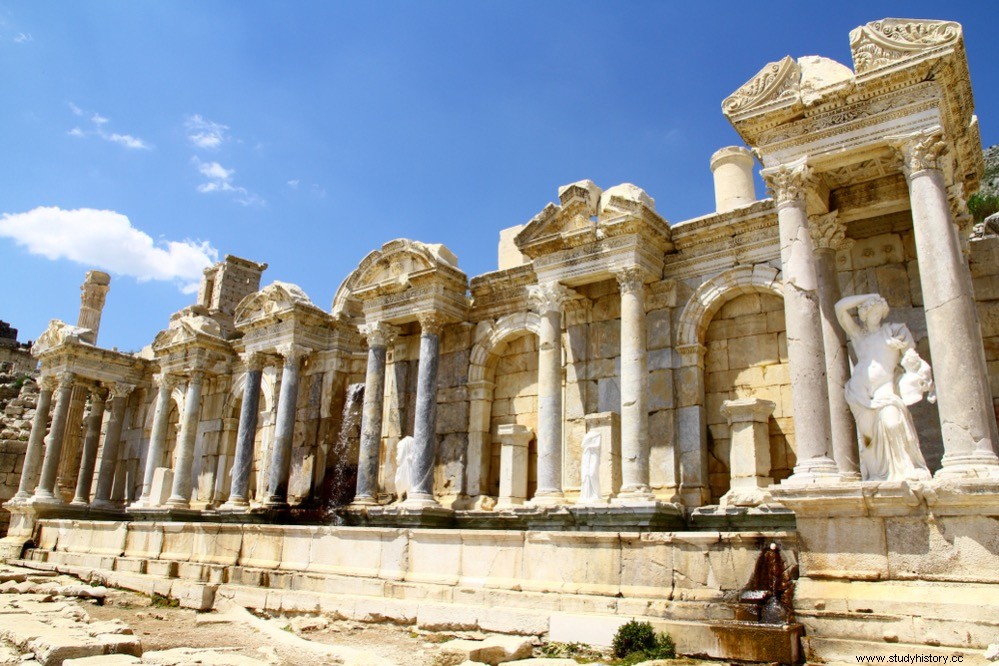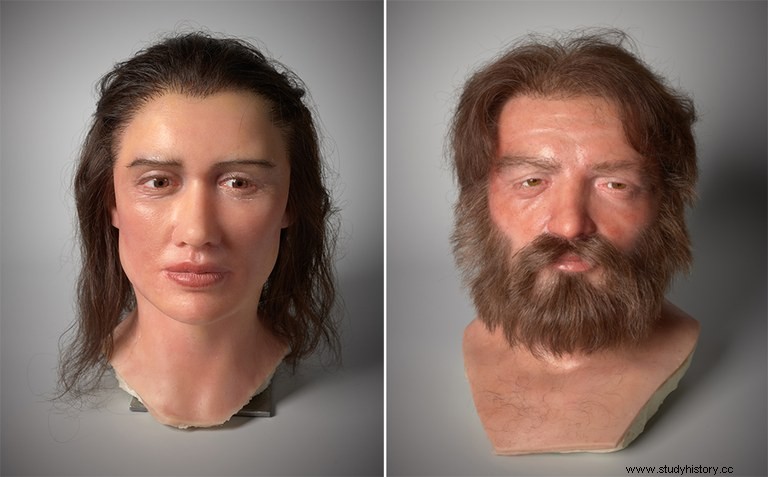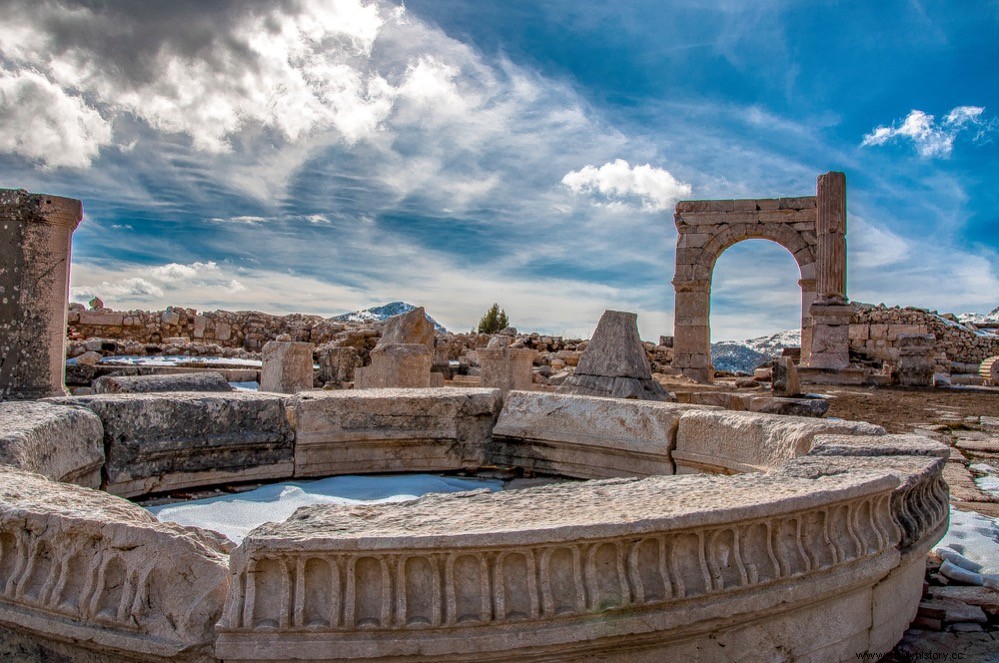In 1706 the French explorer Paul Lucas, on a diplomatic mission in the Ottoman Empire, found the ruins of an ancient city in the southwest of the Anatolian peninsula in the Taurus Mountains.
It would take more than a century until 1824 for an English antiquarian named Francis Arundell, then a chaplain in the city of Smyrna, to visit the place and read the inscriptions that revealed his name, Sagalassos.
The first systematic excavations would begin in 1985, bringing to light the remains of the Hellenistic and Roman city buried by an earthquake in the 7th century. Although until recently this earthquake was thought to have spelled the end of the city, new evidence shows that it continued to be inhabited until the 13th century.

For 30 years archaeologists from the Catholic University of Leuven in Belgium have been leading an international team investigating the site, where a large theater, four monumental fountains, a Byzantine basilica, two agoras, as well as palaces, walls, temples and numerous statues, including one of Emperor Hadrian.
Now, based on the skeletal remains found, researchers have reconstructed two real faces. of people who were citizens of the prosperous Roman capital:one from a Roman man from the early 3rd century AD, and another from a woman of Byzantine origin from between the 11th-13th centuries AD. They have been called Rhodon and Eirènè .
The remains of Eirènè were found in 1995 in a churchyard attached to a chapel, while those from Rhodon They appeared in 2016 in a brick burial chamber that is part of a larger complex with several tombs. Both skeletons were nearly complete and well preserved.

According to Jeroen Poblome, director of the Sagalassos Archaeological Research Project, our research focuses on the daily lives of men and women. These facial reconstructions fit perfectly with this approach .
It is estimated that the man was over 50 years old at the time of his death, and from the objects found with him they deduce that he belonged to a middle-class family. One of these objects is an epistomion , a golden leaf placed in the mouth of the deceased, decorated with the image of a bee; another, a gilt bronze ring. His remains show that he had a physically tough life, with various joint injuries and bone fractures.
The woman must have been between 30 and 50 years old, she had fewer joint injuries and her burial place was much more austere, possibly due to the Christian traditions of the middle Byzantine era.
The first stage of the reconstruction was a completely digital process. A research team from the University of Burdur created a 3D scan of the skulls. The shape of the face was calculated based on the shape of the skull and the origin of the muscles. Layer by layer, the face was rebuilt:first the muscles and layer of fat, and finally the skin. The size and shape of the nose, eyes and ears were also meticulously calculated. Final digital facial reconstructions are 75% accurate.

According to Jeroen Poblome a facial reconstruction is a combination of science and creativity. We cannot deduce skin tone or eye and hair color from the skull, so we have to determine them based on other sources. That is why we base our decisions on the contemporary population of Ağlasun, where the archaeological site is located. Most of the citizens have brown eyes, dark brown hair, and fair skin. So these seemed to be the best options for Rhodon and Eirènè as well .
For the hairstyle and the shape of the beard, the researchers turned to historical sources. The ideal of beauty for Roman men in the 2nd century AD. It is based on Emperor Hadrian. That's why Rhodon was given relatively short hair and a well-groomed beard.
In the Byzantine period the average population paid less attention to physical appearance. Modesty and simplicity were the norm. Descriptions suggest that women typically wore their hair long, loose, or braided. For Eirènè, they therefore chose loose hair with a fine braid.
Starting May 25, the reconstructions will be exhibited for a month at the Leuven University Library. After that they will be delivered to Turkey for permanent exhibition at the Burdur Museum.
